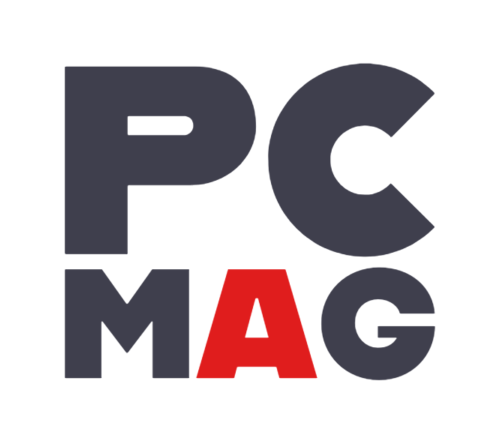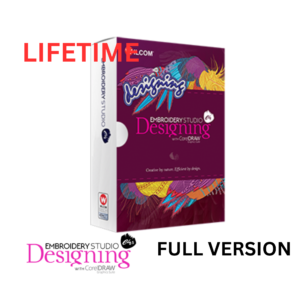Introduction
Embroidery has evolved from a traditional craft into a sophisticated form of digital art and personalization, thanks to advanced embroidery software like Wilcom E2. Wilcom E2 is renowned in the industry for its powerful features, flexibility, and user-friendly design, making it a preferred choice for both hobbyists and professionals. This comprehensive guide will delve into the various aspects of Wilcom E2, including its features, benefits, and practical tips to help you maximize its potential for your embroidery projects.
What is Wilcom E2?
Overview
Wilcom E2 is the latest version of Wilcom’s flagship embroidery software, designed for creating and managing embroidery designs with precision and ease. It offers a suite of tools for digitizing, editing, and managing embroidery designs, making it suitable for various applications from custom apparel to promotional items.
Key Features
- Advanced Digitizing Tools: Tools for creating intricate and high-quality embroidery designs.
- Vector Integration: Ability to import and convert vector graphics into embroidery designs.
- Auto-Digitizing: Features that automatically convert images into embroidery designs with customizable settings.
- Design Management: Tools for organizing and managing embroidery design libraries.
- Customizable Output: Options for tailoring designs to specific embroidery machines and formats.
Getting Started with Wilcom E2
Installation and Setup
- Download and Install: Obtain Wilcom E2 from the official Wilcom website or an authorized distributor. Download the installer and run it to begin the installation process.
- Activation: Enter your activation code during installation to unlock the full features of Wilcom E2. Ensure that your system meets the minimum requirements for smooth operation.
- Initial Configuration: After installation, configure the software settings to match your preferences, including language, default directories, and machine settings.
User Interface Overview
Wilcom E2 features a modern and intuitive interface designed to enhance usability and efficiency. Key components include:
- Main Toolbar: Contains tools for creating, editing, and managing embroidery designs.
- Design Workspace: The central area where you can view and modify your designs.
- Tool Panels: Side panels that provide access to design tools, settings, and design elements.
- Navigation Controls: Features for zooming, panning, and navigating your design workspace.
Core Features of Wilcom E2
1. Advanced Digitizing Tools
Manual Digitizing: Create intricate designs by manually placing stitches, adjusting stitch types, and defining stitch directions. The manual digitizing tools provide control over every aspect of the embroidery design, allowing for high precision and customization.
Auto-Digitizing: Convert bitmap images into embroidery designs automatically. Customize settings such as stitch types, density, and color palette to achieve the desired result.
Stitch Types: Choose from various stitch types, including satin, fill, and specialty stitches. Each stitch type can be adjusted for density, length, and pattern to create the perfect design.
2. Vector Integration
Import Vector Graphics: Import vector files (such as AI, EPS, and SVG) directly into Wilcom E2. The software converts these graphics into embroidery designs, preserving the quality and details of the original artwork.
Vector-to-Embroidery Conversion: Adjust the vector settings to fine-tune the conversion process, including stitch types, density, and fill patterns. This feature ensures that your vector designs translate accurately into embroidery.
3. Auto-Digitizing Features
Image Conversion: Use the auto-digitizing tool to convert images (JPG, PNG, BMP) into embroidery designs. The software provides options to adjust the complexity, stitch density, and color palette of the converted design.
Smart Fill: Automatically fills areas with the appropriate stitch types and densities based on the image’s features. This feature speeds up the digitizing process and ensures consistent results.
4. Design Management
Library Management: Organize your embroidery designs into libraries for easy access and management. Create custom folders, tag designs with keywords, and sort by various criteria.
Design Editing: Edit existing designs using tools for resizing, rotating, and modifying stitch properties. The editing tools allow for precise adjustments and refinements to your designs.
Version Control: Keep track of design revisions and changes with built-in version control. Save multiple versions of a design and revert to previous versions if needed.
5. Customizable Output
Machine Compatibility: Configure designs for compatibility with various embroidery machines and formats. Wilcom E2 supports a wide range of machine formats, ensuring that your designs are compatible with your equipment.
Export Options: Export designs in multiple formats, including DST, PES, and EXP. Customize export settings to match the specifications of your embroidery machine and project requirements.
Preview and Simulation: Preview designs on-screen and simulate how they will appear once embroidered. The simulation feature helps identify potential issues and make adjustments before finalizing the design.
Practical Tips for Using Wilcom E2
1. Master the Basics
Familiarize Yourself with Tools: Take time to explore and understand the various tools and features available in Wilcom E2. Knowing how to use each tool effectively will improve your efficiency and design quality.
Utilize Tutorials: Wilcom offers tutorials and training materials that cover different aspects of the software. Use these resources to learn new techniques and improve your skills.
2. Optimize Your Designs
Use High-Quality Images: For auto-digitizing, start with high-resolution images to ensure the best possible conversion results. Clean and clear images translate better into embroidery designs.
Adjust Stitch Density: Fine-tune stitch density to balance between design quality and fabric type. Proper density settings prevent issues such as puckering or excessive thread buildup.
Test Designs: Before finalizing a design, run test stitches on a sample fabric to check for issues and make necessary adjustments. Testing helps ensure that the final product meets your expectations.
3. Manage Your Library
Organize Designs: Keep your design library organized by categorizing designs into folders and tagging them with relevant keywords. An organized library makes it easier to find and manage designs.
Back Up Your Designs: Regularly back up your design library and settings to prevent data loss. Store backups in multiple locations, such as external drives or cloud storage.
4. Customize Your Workflow
Create Presets: Save frequently used settings as presets to streamline your workflow. Custom presets for stitch types, color palettes, and export settings can save time and improve consistency.
Use Keyboard Shortcuts: Learn and use keyboard shortcuts for common tasks to increase your efficiency. Wilcom E2 offers customizable shortcuts that can be tailored to your workflow.
5. Stay Updated
Install Updates: Regularly check for software updates and install them to benefit from new features, improvements, and bug fixes. Staying updated ensures that you have access to the latest tools and enhancements.
Engage with the Community: Join online forums and communities for Wilcom users to exchange tips, seek advice, and stay informed about new developments. Engaging with the community can provide valuable insights and support.
Case Studies and Applications
Case Study 1: Custom Apparel Business
Background: A custom apparel business specializing in branded merchandise needed a robust embroidery software solution to handle complex designs and manage high volumes of orders.
Solution: The business adopted Wilcom E2 for its advanced digitizing tools, vector integration, and design management features. The software’s ability to convert vector graphics into embroidery designs and manage design libraries streamlined their workflow.
Results: The business saw increased productivity and improved design quality, allowing them to handle more orders and expand their client base.
Case Study 2: Promotional Products Company
Background: A promotional products company required embroidery software that could handle diverse design requirements and produce high-quality results on various fabrics.
Solution: Wilcom E2 was selected for its customizable output options, machine compatibility, and auto-digitizing features. The company utilized the software’s preview and simulation tools to ensure accurate results before production.
Results: The company experienced enhanced design accuracy and consistency, leading to higher customer satisfaction and a stronger market presence.
Troubleshooting Common Issues
1. Activation Problems
Issue: Users may encounter issues with activation, such as invalid activation codes or server errors.
Solution: Ensure that you are using a valid activation code and that your internet connection is stable. Contact Wilcom customer support if issues persist.
2. Performance Issues
Issue: Slow performance or crashes may occur, especially with large or complex designs.
Solution: Check your system requirements and ensure that your hardware meets the recommended specifications. Close other applications to free up system resources and optimize performance.
3. Design Compatibility Issues
Issue: Compatibility problems with embroidery machines or file formats.
Solution: Verify that your design is compatible with your embroidery machine and file format requirements. Update machine drivers and firmware as needed.
4. Auto-Digitizing Problems
Issue: Issues with auto-digitizing, such as poor conversion results or incorrect stitch placement.
Solution: Adjust the auto-digitizing settings, including stitch types, density, and color palette. Start with high-resolution images and manually refine the design if necessary.
Conclusion
Wilcom E2 stands out as a powerful and versatile embroidery software solution, offering a comprehensive set of tools for creating, editing, and managing embroidery designs. With its advanced digitizing capabilities, vector integration, and customizable output options, Wilcom E2 caters to the needs of both hobbyists and professionals in the embroidery industry.
By mastering the software’s features, optimizing your designs, and staying updated with the latest tools and techniques, you can enhance your embroidery projects and achieve high-quality results. Whether



